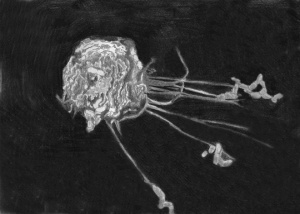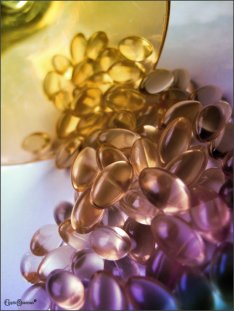
All posts by doylebakerlab
Teaching Kids (and Youth) to Play
by: Andrew Stewart Published 08/08/13
 Since I have already touched on the amount of physical activity experts have recommended for kids and the youth it only makes sense in this following post we explore ways of encouraging this behavior. Unfortunately, finding resources on this subject are difficult; verifying their credibility even more so. As a result the majority of this post will focus on theories which may or may not apply in all cases.
Since I have already touched on the amount of physical activity experts have recommended for kids and the youth it only makes sense in this following post we explore ways of encouraging this behavior. Unfortunately, finding resources on this subject are difficult; verifying their credibility even more so. As a result the majority of this post will focus on theories which may or may not apply in all cases.
As children are developing they are constant learning. While this fact may not come as much of a surprise, one aspect of this that isn’t often considered is the fact this also applies to the way kids play. The act of playing is a complex physical and social action, when we are young the activities we are exposed to by our parents shape the way we engage in physical activity and how we incorporate it into our lives.
In our current society it appears that a large amount of emphasis is put on “organized sport” as a way of getting, and keeping kids active. In general, organized sports programs are highly specialized and regulated. Adults set practice times, buy the necessary equipment, pay fees, and enforce the rules.
 There is nothing directly wrong with organized sport but in many circumstances it limits input from the child. We must remember that children do things that are presently fun, training specifically for future athletic endeavors is often the opposite. In fact, a large proportion of successful professional athletes don’t choose to specialize in a sport at a young age ( Baker 2003).
There is nothing directly wrong with organized sport but in many circumstances it limits input from the child. We must remember that children do things that are presently fun, training specifically for future athletic endeavors is often the opposite. In fact, a large proportion of successful professional athletes don’t choose to specialize in a sport at a young age ( Baker 2003).
How do we give children more freedom while keeping them active? We must consider the lost art of the “pick up” game. In an article by Peter Gray (a professor at Boston College) it is proposed there are a few key elements present in informal sports that children need to be exposed to.
Here they are:
“There is no real difference between your team and the opposing team”
“To keep the game going, you have to keep everyone happy, including the players on the other team”
“Rules are modifiable and are generated by the players themselves”
“Conflicts are settled by argument, negotiation, and compromise”
“Playing well and having fun really ARE more important than winning”
– Peter Gray 2009
While Dr. Gray does appear to be using the article I used to promote his book, after considering the points he raises it does appear that each of these elements have the potential to increase the levels of fun inherent in sport. They also create the potential for a child/youth to take ownership of the activity.
Multiple studies have proven that children engage in more physical activity if they feel that they have personal control over it (Welk 1999).
In conclusion I would like to say that while the article I have ended up writing is far different than the one I set out to write I think the topic of informal play/ physical activity is important to consider. To wrap up this post I just want to emphasize that children aren’t born knowing how to organize leisure activities with their friends. Initially it is something they will need help doing it but at some point, for kids to get the full effect the training wheels need to come off.
References:
Baker, J. (2003). Early Specialization in Youth Sport: a requirement for adult expertise? High Ability Studies, 14(1), 85-94.
Gray, P. (2009). The Roles of Play and Curiosity as Foundations for Learning. Retrieved from http://www.psychologytoday.com/blog/freedom-learn/200911/some-lessons-taught-informal-sports-not-formal-sports
Welk, G. J. (1999). The Youth Physical Activity Promotion Model: A Conceptual Bridge Between Theory and Practice. Quest, 51(1), 5-23. doi: 10.1080/00336297.1999.10484297
Image: “Play” by Iosa (©2011-2013)
Image: “Street Hockey” by a-puffs (©2008-2013)
How Much Physical Activity Do Children Need?
by: Andrew Stewart Published 08/06/13
To Kick off August, and our Physical Activity Theme I figured it would be a good idea to start by focusing on children and youth.
Unbeknownst to the majority of the population a disease epidemic of massive proportions is occurring in most first world countries and it is going almost unnoticed – it is an epidemic of obesity in the young.
Results from the 2004 Canadian Community Health Survey indicate that ~18% of children ages 2 to 17 in Canada are overweight with an additional 8% of these individuals being obese. This is not normal and is a fairly recent and startling development.
While to some “weight” is a controversial subject, from medical standpoint obesity is clearly a disease that threatens the long term survival of an individual. It is good idea to try to nip it in the bud. With a few rare exceptions an overweight child is the result of the environment they are raised in. There are some genetic predispositions but through physical activity and a balanced diet they can be suppressed for a lifetime.
To get this week started I would like to introduce you to the currently accepted physical activity guidelines for children (As recommended by The Canadian Society of Exercise Physiologists). As the week progresses I will then provide you with information on why they are important and some good ways of getting kids moving.
The following recommendations are taken from the Canadian Society of Exercise Physiologists (CSEP) for levels of both sedentary and non-sedentary activities in children which we at the lab (generally) trust to be accurate.
CSEP recommends that children (ages 5-11) and youth (ages 12-17) should limit recreational screen time to no more than two hours per day. On top of this in an official press release they stated that “children and youth should also limit sedentary transport, prolonged sitting and time spent indoors throughout the day”.
Secondly, CSEP also indicates that for health benefits children and youth should partake in at least 60 minutes of moderate to vigorous intensity physical activity daily (moderate to vigorous activity means that Kids need to be getting their hearts and lungs working hard).
 How often have you driven by a children’s soccer game to see half of the team sitting on the field picking the dandelions instead of chasing the ball? While there is nothing wrong with this widely practiced form of amateur horticulture; to get that 60 minutes a day we need to make sure that every once in a while they engage with the game and run as hard as they can after that ball!
How often have you driven by a children’s soccer game to see half of the team sitting on the field picking the dandelions instead of chasing the ball? While there is nothing wrong with this widely practiced form of amateur horticulture; to get that 60 minutes a day we need to make sure that every once in a while they engage with the game and run as hard as they can after that ball!
It is also important to take into account that the recommendation is for 60 minutes of moderate to vigorous activity – not 60 minutes total of physical activity. With a maximum of 2 hours of sedentary activity, even with time spent at school and completing ever growing piles of homework children and youth need to be filling up their free time with as many active pursuits as possible.
Now that you know how much physical activity a child needs, how can we make sure they get it? Look for my next posts as I attempt to find some answers for this question. In the following weeks look forward to articles by my colleagues who will try to figure out how you can fit in the physical activity you need as well as a guest post on the challenges which face cancer patients who are attempting to remain active while battling disease.
References:
Starky, S. (2005). The Obesity Epidemic In Canada. Library of Parliament.
Teed, L. (2011). New Canadian Physical Activity Guidelines Released: Canadian Society of Exercise Physiologists.
Teed, L., & Pacheco, M. (2011). Cutting down on sitting down: the world’s first evidence-based sedentary behaviour guidelines released: Canadian Society of Exercise Physiologists.
Image: “The Athlete” by Bill Fleming (©2010-2013)
Image: “Dandelion” by mechtaniya (©2010-2013)
Vitamin D what is its Link to Cancer?
By: Andrew Stewart Published 07/29/13
There has been a lot of buzz in the news recently talking about Vitamin D and Cancer prevention. With the exception of daily recommended allowances, this is the most controversial area relating to Vitamin D.
Vitamin D Researchers and the Media
When health research is passed on to the general public it is often reduced down – it is a challenge for anyone to reduce 10 years of work into a succinct newspaper article or 2 minute news clip. This coupled with the “publish or perish” mentality in academia results in the production of news that while not necessarily untrue is greatly exaggerated. To help clarify, I’ll start by giving a brief summary on the general progression researchers take from theory to scientific fact.
 Due to the nature of medical research and the progress we have made regarding ethics researchers generally have to start on a small scale and work their way up the scientific totem-pole. Long gone are the days of the Dr. Frankensteins who perform questionable experiments in their attic. When medical research pertaining to humans is done in a new area it is the researcher’s responsibility to prove (within reason) that what they are attempting to do won’t have unforeseen effects that endanger the people they are trying to help.
Due to the nature of medical research and the progress we have made regarding ethics researchers generally have to start on a small scale and work their way up the scientific totem-pole. Long gone are the days of the Dr. Frankensteins who perform questionable experiments in their attic. When medical research pertaining to humans is done in a new area it is the researcher’s responsibility to prove (within reason) that what they are attempting to do won’t have unforeseen effects that endanger the people they are trying to help.
As a result, much work is done on clumps of cells from various donor species or on animal models that we recognize (through additional research) to be similar in some particular way to the human body. The work done in this area is termed “pre-clinical”. It is often a much easier, cheaper, and safer to study something. This however often comes at the cost of application – not everything that is true on a small scale is true in the real world.
The jump from pre-clinical testing to clinical testing in humans can be a rather large one. There is no guarantee that what worked before will work in humans. The human body is amazingly complex with many variables that can get in the way.
In the case of Vitamin D it appears that promising results in the lab do not always result in medical breakthroughs in humans. In 2011 a researcher by the name of Simone Mocellin collected a large body of scientific literature and dissected it to see if different researchers around the world were in agreement regarding the effects of Vitamin D on Cancer. The conclusion that was drawn was that “overall a relationship between vitamin D and cancer does exist, although its strength appears to weaken as we move from the preclinical to the clinical ground” (Mocellin 2011).
Below I have broken down what I have found researchers are generally saying about Vitamin D and different types of Cancer.
Prostate Cancer
Upon writing this article, it would appear that the majority of the work done regarding the relationship between the circulating levels of Vitamin D in your blood and the risk of developing prostate cancer has lead to the conclusion that low levels of Vitamin D either do not lead to an increased risk of developing prostate cancer (2011 Mocellin, 2009 Yin et al, 2010 Gandini et al.). I found this agreement across three different meta-analyses which lend a significant amount of support to this conclusion.
Breast Cancer
Similar to the case of Prostate Cancer, low circulation levels of Vitamin D in the blood currently do not appear to increase the risk of developing Breast Cancer (Gandini 2011, Chen 2010). Within the literature studied by Mocellin, there was one exception which indicated that increased risk of Breast cancer occurred with lower levels of Vitamin D. I tried to find a copy of this paper (Yin 2010) to take a look at it to see what they said but was unsuccessful – it does appear that their opinion is in the minority.
Colorectal Cancer
Now so far it appears that researchers haven’t come up with much regarding Vitamin D and Cancer, I did however save the best for last. When researchers have studied Colorectal cancer they found that increased levels of Vitamin D does result in a reduction in Cancer risk! (Gorham 2007, Yin 2009, Gandini 2010)
It is commonly accepted that diet and nutrition plays a large role in protecting ourselves from the risk of developing Colorectal cancer.
 Currently it appears that keeping up your levels of Vitamin D does as well. This finding reinforces the requirement of a healthy and balanced diet for the maintenance of long term health.
Currently it appears that keeping up your levels of Vitamin D does as well. This finding reinforces the requirement of a healthy and balanced diet for the maintenance of long term health.
Well, I believe that this concludes our month on Vitamin D. I hope these posts have contributed to your knowledge on the subject and hopefully addressed some of the controversy that exists on the topic. If you are looking for more in depth information on the topic feel free to peruse the works cited, the researcher papers I have referenced all come from reputable journals with rigorous peer-review processes.
References
Mocellin, S. (2011). Vitamin D and cancer: Deciphering the truth. Biochimica et Biophysica Acta (BBA) – Reviews on Cancer, 1816(2), 172-178. doi: http://dx.doi.org/10.1016/j.bbcan.2011.07.001
Yin, L., Raum, E., Haug, U., Arndt, V., & Brenner, H. (2009). Meta-analysis of longitudinal studies: Serum vitamin D and prostate cancer risk. Cancer Epidemiology, 33(6), 435-445. doi: http://dx.doi.org/10.1016/j.canep.2009.10.014
Gandini, S., Boniol, M., Haukka, J., Byrnes, G., Cox, B., Sneyd, M. J., . . . Autier, P. (2011). Meta-analysis of observational studies of serum 25-hydroxyvitamin D levels and colorectal, breast and prostate cancer and colorectal adenoma. International Journal of Cancer, 128(6), 1414-1424. doi: 10.1002/ijc.25439
Chen, P., Hu, P., Xie, D., Qin, Y., Wang, F., & Wang, H. (2010). Meta-analysis of vitamin D, calcium and the prevention of breast cancer. Breast Cancer Research and Treatment, 121(2), 469-477. doi: 10.2105/AJPH.2004.045260
Gorham, E. D., Garland, C. F., Garland, F. C., Grant, W. B., Mohr, S. B., Lipkin, M., . . . Holick, M. F. (2007). Optimal Vitamin D Status for Colorectal Cancer Prevention: A Quantitative Meta Analysis. American Journal of Preventive Medicine, 32(3), 210-216. doi: http://dx.doi.org/10.1016/j.amepre.2006.11.004
Image: Science” by herryC (©2011-2013)
Image: “Stay healthy” by Naivaan (©2012-2013)
Vitamin D – What it does for Your Body
By: Andrew Stewart Published 07/26/13
Hopefully after reading my last post you have some background on Vitamin D (If you’re still confused check out the links I included at the bottom of that post).
I think the next logical area I will cover is what researchers generally accept that Vitamin D does for you.
Like I mentioned earlier, Vitamin D does a ton of work within our bodies so this post is just going to scratch the surface.
Vitamin D, Calcium, and Phosphorus
 Under “normal operating conditions” Vitamin D increases the efficiency of the small intestine. Contrary to popular belief, the intestines actually are extremely important for getting the nutrients out of our food – more so than the stomach. Anyway, Vitamin D allows us to get more Calcium and Phosphorus from the food we eat and into our bloodstream (DeLuca 1988). Both Calcium and Phosphorus are essential in our bodies for a multitude of biological processes which contribute to its normal growth, development, and maintenance.
Under “normal operating conditions” Vitamin D increases the efficiency of the small intestine. Contrary to popular belief, the intestines actually are extremely important for getting the nutrients out of our food – more so than the stomach. Anyway, Vitamin D allows us to get more Calcium and Phosphorus from the food we eat and into our bloodstream (DeLuca 1988). Both Calcium and Phosphorus are essential in our bodies for a multitude of biological processes which contribute to its normal growth, development, and maintenance.
Increasing levels of Phosphorus and Calcium in our blood helps the body build and maintain stronger bones. If you are at risk for osteoporosis or perhaps have recently broken a bone getting adequate levels of Vitamin D in your diet can help you increase bone mass/healing. The majority of the research published in this area is in agreement – low levels of Vitamin D have been observed to result in a slightly increased risk of bone fracture (Scragg 2011).
Vitamin D and Muscles?
While most people associate Vitamin D with bone, did you know that it also acts on your muscles? Without going too in depth into skeletal muscle physiology Vitamin D helps move Calcium into muscle cells.
Once Calcium gets moved to the right area in your muscle cells it interacts with the small contractile proteins which work together to develop force in your muscles (via a process called the Cross-Bridge Cycle). Lower levels of Calcium in muscles reduce your ability to contract them which contributes to the feeling of fatigue (2002 Pfeifer et al.). While muscle weakness after a workout doesn’t necessarily mean that your Vitamin D is low, it may contribute in part to that long term fatigue experienced during those dark winter months.
Vitamin D Enemy of Bacteria
The final aspect of Vitamin D I will look at today is that of an Immune Booster within our bodies. The role of Vitamin D in the immune system was first considered after the discovery of Vitamin D receptors in many different types of immune cells within the human body. It now appears t hat Vitamin D induces anti-mycobacterial activity in certain immune cells that make up the first line of defense in our bodies against foreign invaders.
hat Vitamin D induces anti-mycobacterial activity in certain immune cells that make up the first line of defense in our bodies against foreign invaders.
Currently, it looks like Vitamin D modifies gene regulation causing a plethora of changes in these cells. The result is the production of strong bacteria eating macrophages (bacterial eating/killing cells) that are better at their job. Vitamin D allows the body to create cells that are both more effective at killing bacteria and are able to kill more bacteria before they run out of juice (2010 Baeke). When it comes to your immune system you definitely want it in tip top shape!
Now, in the media there has been quite a lot of buzz regarding Vitamin D and Cancer – I am saving this for last and will dedicate a whole post to the issue. You can look forward to this post within the next day or two. In the meantime, you can check out some of the literature I have cited below to get an in-depth view of the way Vitamin D works in our bodies.
References
Baeke, F., Takiishi, T., Korf, H., Gysemans, C., & Mathieu, C. (2010). Vitamin D: modulator of the immune system. Current Opinion in Pharmacology, 10(4), 482-496. doi: http://dx.doi.org/10.1016/j.coph.2010.04.001
DeLuca, H. F. (1988). The vitamin D story: a collaborative effort of basic science and clinical medicine. The FASEB Journal, 2(3), 224-236.
Pfeifer, M., Begerow, B., & Minne, H. W. (2002). Vitamin D and Muscle Function. Osteoporosis International, 13(3), 187-194. doi: 10.1007/s001980200012
Scragg, R. (2011). Vitamin D and public health: an overview of recent research on common diseases and mortality in adulthood. Public health nutrition, 14(9), 1515-1532.
Image: “Study of structure with pencil” by *monorok (©2012-2013)
Image: “Macrophage” dclaudiob (©2008-2013)
Current Statistics in Vitamin D

A brief infographic on current Canadian Vitamin D trends
The basics of Vitamin D – what is it and what does your body do with it?
By: Andrew Stewart Published 07/23/13
Let’s start off first by recognizing that “Vitamin D” isn’t necessarily one unique substance that our bodies need. It’s really an umbrella term which describes a group of molecules of similar structure.
For example, Vitamin D3 (Cholecalciferol) is created in our skin when it is exposed to energy from the sun. In a sense, Vitamin D3 isn’t a true vitamin. With adequate exposure to the sun (UVB) we can get along just fine without supplementation.
There are also forms of Vitamin D in the foods we eat. This form is commonly called Vitamin D2 or “Ergosterol” and can be found in eggs, fish oils, and many plants but generally in low levels. Many food suppliers now add Vitamin D to foods to increase the levels of Vitamin D in our diet.
Now, Vitamins D2 and D3 on their own don’t do much for our bodies – they are raw substances that require some processing before we can put them to use. Through the use of our liver and subsequently the kidneys a series of structural conversions occur creating a compound with the fancy name of 1,24-dihydroxycholecalciferol. Just like its precursors it is what we call a fat soluble compound.
As I am sure you know, we are mostly water and fats don’t dissolve too well in water. To account for this we have special Vitamin D binding proteins which protect the activated Vitamin D and shuttle it throughout our bodies to where we need it most.
Ok, now that our bodies have processed the Vitamin D we need and it is floating around in our bloodstream how do our cells get at it? Well, the Vitamin D carrier proteins pull the Vitamin D through the protective membrane (outer wall) in our cells so that it is exposed to the inner cellular machinery responsible for everyday function. In order for Vitamin D to work though, it needs a way of communicating with our machinery.
 Deep inside our cells are Vitamin D Receptors. To simplify things, you can think of these receptors as a Lego with two open spots. One clips on to the bioactive Vitamin D, and the other onto our DNA. Once the receptor is clipped onto both, the way our DNA is read changes, and as a result different machines (systems) are turned on or shut down. This leads to a myriad of changes within our bodies. In fact, so many changes occur due to Vitamin D that researchers still don’t know everything that it does!
Deep inside our cells are Vitamin D Receptors. To simplify things, you can think of these receptors as a Lego with two open spots. One clips on to the bioactive Vitamin D, and the other onto our DNA. Once the receptor is clipped onto both, the way our DNA is read changes, and as a result different machines (systems) are turned on or shut down. This leads to a myriad of changes within our bodies. In fact, so many changes occur due to Vitamin D that researchers still don’t know everything that it does!
Ok, to prevent too much information overload I’m going to end here for today. In my next post I will start to go through what researchers think Vitamin D changes in the body. Later this week I will attempt to cover some of the Vitamin D controversy currently being brought up in the news; specifically, can Vitamin D do everything people say it does?
References
Bowen, R. A. (2011) Vitamin D (Calcitriol). Pathophysiology of the Endocrine System. Retrieved June 23, 2013, from http://www.vivo.colostate.edu/hbooks/pathphys/endocrine/otherendo/vitamind.html
Higdon, J. & Drake V. (2011) Vitamin D. Oregon State University Micronutrient Information Center. Retrieved June 23, 2013, from http://lpi.oregonstate.edu/infocenter/vitamins/vitaminD/index.html
Mayo Clinic (2012) Vitamin D and Related Compounds (Oral Route, Parenteral Route). Mayo Clinic Drug Information. Retrieved June 23, 2013, from http://www.mayoclinic.com/health/drug-information/DR602171
Image: “Medicated Sunshine Remix” Cryptic Shadows (©2011-2013)
Image: “Lego Thumbdrive” m-schneider (©2009-2013)
Welcome!!
Welcome to the Doyle-Baker lab blog!
Here is a little profile of who we are and what we do, and what our blog and twitter is all about!!
About us:
We are a lab group consisting of graduate and summer students working under the supervision of Dr. Doyle-Baker at the University of Calgary, Alberta, Canada.
Dr. Doyle-Baker is a clinical researcher and associate professor at the University of Calgary in the faculties of Kinesiology and Environmental Design (adjunct), and also an affiliate with Population Health Intervention Research Centre, Collaborator with the Sport Injury Research Prevention Centre and Member: ACH Research Institute for Child and Maternal Health.
So, what do you do?
Dr. Doyle-Baker received is a Doctor of Public Health (Dr. PH) and she received this from Loma Linda University in California, focusing on epidemiology – the study of how often disease occur in different groups of people and why (www.bmj.com), and clinical preventive services. Dr. Doyle-Baker’s research primarily involves preventative medicine, clinical exercise physiology and epidemiology (http://www.ucalgary.ca/knes/doyle-baker).
Therefore, as graduate (master-level) and summer students of this lab – we focus on and conduct research in the field of health and wellness – more specifically public health. Our research projects range from topics such as osteoarthritis in sport, Vitamin D in populations, health economics and social media.
Why do you have a blog?
Is red wine and dark chocolate actually good for your heart?
Can plaque buildup in your arteries and be reversed?
Is the flu shot beneficial?
When searching for answers to questions, one does not have to look further than search results on Google, episodes of Dr. Oz and opinionated magazine articles to realize that there are many contradicting answers!! Often you can even find a source to confirm what you would like to believe about specific health topics.
As a lab group we have collectively agreed that there remains a gap in knowledge between the research and what is considered “truth” in the general population. Throughout our undergraduate degrees and continuing into our graduate studies, we understand this gap by talking to our friends, family and co-workers about these topics. We realize the lack of knowledge or misinterpretation of knowledge that is out there, and wish to inform and educate on the most recent research to answer questions regarding health and wellness!
We wish to contribute our efforts to help close this gap by using Twitter and our blog to help keep you updated and informed about the latest research and results. We hope to answer your questions and clear any misconceptions about particular topics.
How do I know this research is actually accurate and true?
Our tweets and blogs will be based on evidence based research which means it is peer reviewed and published in high impact scientific journals.
Peer reviewed means that research has been reviewed by other professionals in the same field to confirm that the methods and results of the project are reliable and accurate. Research is reviewed by more than one person, and often undergoes many revisions.
Published means that research has undergone peer reviews and considerably more reviews from journal editors. Once research is published, it is available to other academics and researchers, who may actually try to replicate the study again to see if the same results are obtained. Research must contain background information on the topic, the methods it used, and results, followed by a discussion on the results and limitations of the study.
Scientific journals are sources where research is published. There may be many research articles (called journals) in a single journal, and they are often published many times throughout the year with different research articles in them.
The point of describing this procedure is to help you understand that our lab will only be using research that has undergone the highest level of critique and acceptance in the scientific community. Our sources of information will be tried, tested and true. We will call that the ‘triple T outcome’
However, as research evolves there are continuously new and superior methods of research being discovered. Therefore, we devote ourselves to bring you only the highest quality of information that is out there on that given day!!
What will this blog look like?
Each month we are planning different themes that correspond to the month – we will include articles from different sources, critique their accuracy and bring you answers from the research that is available!
Thank you for taking the time to take a look at our blog! Stay tuned in the coming weeks for what we have in store!!
Sincerely,
Dr. Doyle-Baker and the lab team

